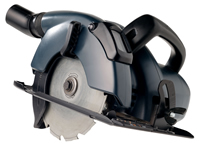Buy Quiet
Posted on by We know that using tools and machinery that produce less noise will help prevent hearing loss among the workers who use them. The next step would seem obvious—buy quieter tools and machinery. Unfortunately, it’s not that simple. Making products quieter is a tough sell in industry. Currently, the availability of quieter tools and machines is limited and it’s not always clear to purchasers how much noise particular tools and machinery produce. NIOSH and its partners are working to change that through the creation of a Buy Quiet web tool.
We know that using tools and machinery that produce less noise will help prevent hearing loss among the workers who use them. The next step would seem obvious—buy quieter tools and machinery. Unfortunately, it’s not that simple. Making products quieter is a tough sell in industry. Currently, the availability of quieter tools and machines is limited and it’s not always clear to purchasers how much noise particular tools and machinery produce. NIOSH and its partners are working to change that through the creation of a Buy Quiet web tool.
This web tool will build on the process of “buy quiet”—the concept that employers can most effectively reduce hazardous noise levels at their worksites through their procurement process. The process encourages a purchaser to compare the noise emission levels of differing models of equipment being purchased and, whenever possible, purchase the quieter model. “Buy quiet” provides an easy and effective method for an employer to demonstrate a commitment to the use of the best available technology to reduce the number of workers suffering from, or at risk of, occupational noise-induced hearing loss. This can help position a company as being innovative and competitive for its business. The process also shifts some of the responsibility for “quiet” onto the groups most capable of reducing noise emission at its source, the manufacturers of the machinery and equipment being purchased.
Given the high rates of noise-induced hearing loss in the construction and manufacturing industries, NIOSH and its partners are developing and field testing a web-based tool to help it make it easier to purchase quieter tools and machinery in these industries . The Buy Quiet web tool will incorporate elements from an existing procurement process in flow chart, generating purchasing options, cost-benefit calculations, and updates to existing inventories as new equipment is purchased and older equipment is retired. We hope this web-based Buy Quiet tool will do two things:
- Help to change market forces to increase demand for quieter equipment and machinery by the construction and manufacturing industry; and
- Motivate respective manufacturers to provide such quiet equipment.
There are already “buy quiet” and “quiet-by-design” efforts underway within the U.S. Department of Defense (DOD) and the National Aeronautics and Space Administration (NASA). Other collaborative research partners, such as the Laborers’ Health and Safety Fund of North America (LHSFNA) are focused on motivating cultural change within an industry. The LHSFNA provides information resources and methods for reducing noise emissions and promotes the implementation of noise controls and “buy quiet” programs. “Buy quiet” programs and the application of engineering noise controls will also be promoted through revising existing standards to recommend appropriate noise-level testing and labeling.
As we move forward with the development of the NIOSH Buy Quiet web tool, we value your input. Leave a comment below to let us know if such a tool would be beneficial in your workplace. Can you foresee specific benefits and barriers for using this web tool in your organization? Can you suggest strategies for overcoming challenges? Is your organization interested in participating in a pilot?
You can also provide your input in person at the upcoming Buy Quiet Workshop November 9-10, 2011 in Cincinnati, Ohio.
Lieutenant Commander Hudson is a Health Communications Officer in the NIOSH Division of Applied Research and Technology.
Captain Hayden is a Research Acoustical Engineer in the NIOSH Division of Applied Research and Technology.
See also
Posted on by

